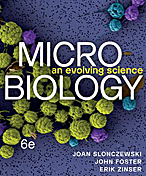Nonlabens Tegetincola: Difference between revisions
| Line 11: | Line 11: | ||
==Description and significance== | ==Description and significance== | ||
Nonlabens Tegetincola is an Orange-pigmented, Gram-negative, rod-shaped and is can survive and grow in the presence of oxygen. This bacteria was discovered in the Bahamas on a microbial mat in an Estuary. The colonies that were grown on marine agar grew to the size of 2.0mm-4.0mm, and to achieve this size using the temperature of 28–36 °C. Nonlabens Tegetincola | Nonlabens Tegetincola is an Orange-pigmented, Gram-negative, rod-shaped and is can survive and grow in the presence of oxygen. This bacteria was discovered in the Bahamas on a microbial mat in an Estuary. The colonies that were grown on marine agar grew to the size of 2.0mm-4.0mm, and to achieve this size using the temperature of 28–36 °C. Nonlabens Tegetincola predominant fatty acids are i15 : 0, i16 : 0, i17 : 0 3-OH, and summed feature 3, comprising i15 : 0 2-OH and/or 16 : 1ω7c. | ||
==Ecology== | ==Ecology== | ||
Revision as of 00:38, 12 March 2014
Classification
Higher order taxa
Bacteria (Domain) ; (Phylum) Bacteroidetes; (Class) Flavobacteria; (Order) Flavobacteriales; (Family) Flavobacteriaceae; (Genus) Nonlabens
Species
This particular bacteria is a Tegetincola.
Description and significance
Nonlabens Tegetincola is an Orange-pigmented, Gram-negative, rod-shaped and is can survive and grow in the presence of oxygen. This bacteria was discovered in the Bahamas on a microbial mat in an Estuary. The colonies that were grown on marine agar grew to the size of 2.0mm-4.0mm, and to achieve this size using the temperature of 28–36 °C. Nonlabens Tegetincola predominant fatty acids are i15 : 0, i16 : 0, i17 : 0 3-OH, and summed feature 3, comprising i15 : 0 2-OH and/or 16 : 1ω7c.
Ecology
Current Research
One way of research that we are currently doing is incubating the bacteria to find out what it requires to fully flourish and to provide us with results.
References
Edited by (insert your name here!), student of Rachel Larsen at the University of Southern Maine
This template is just a general guideline of how to design your site. You are not restricted to this format, so feel free to make changes to the headings and subheadings and to add or remove sections as appropriate.
